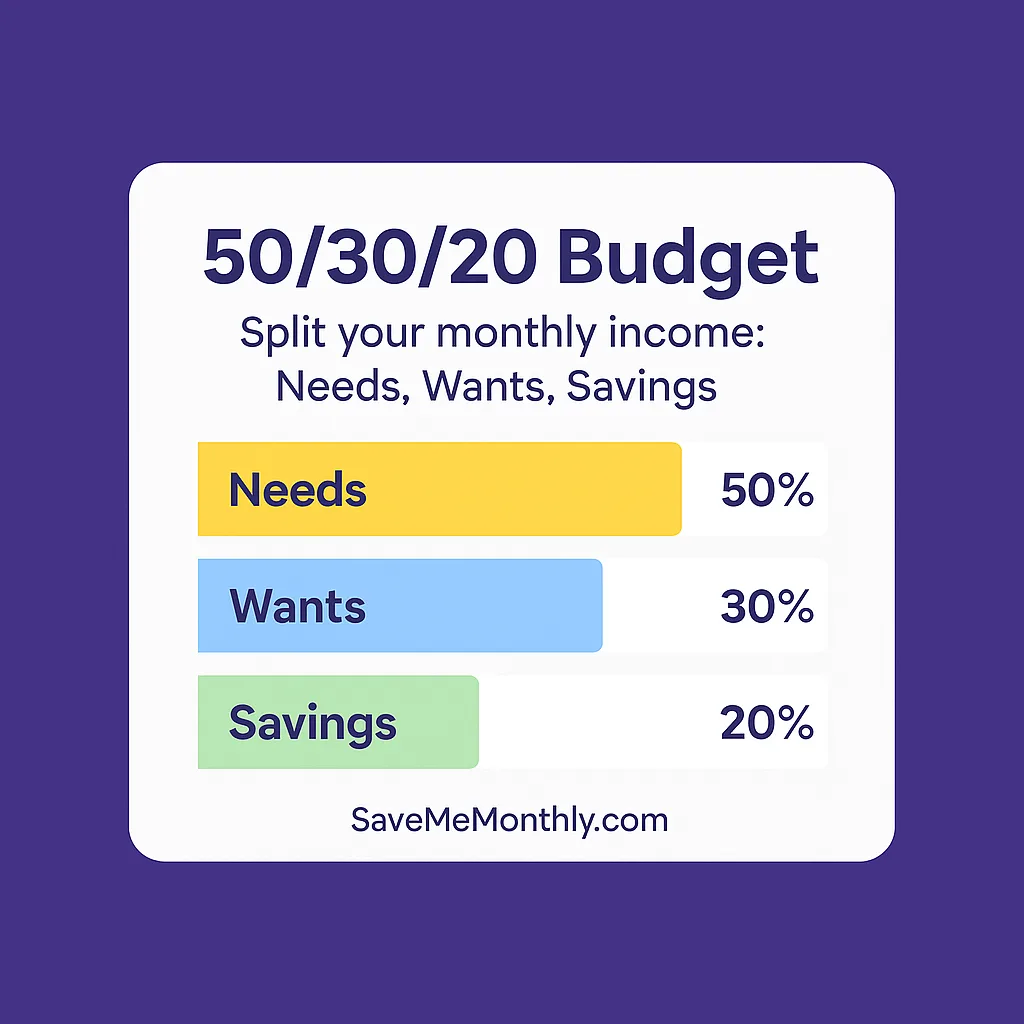Master Your Money With the 70/20/10 Budget Rule for Easy Savings
If budgeting formulas usually make your head spin, the 70/20/10 budget rule might be the breath of fresh air you need. This simple guideline divides your after tax income into three parts: 70% for spending, 20% for savings, and 10% for debt or giving. I like it because it is straightforward and realistic. No complicated spreadsheets or guilt trips. Just a clear plan to save money without feeling miserable. In plain English, it helps you build savings and still have a life.
I remember trying the popular 50/30/20 budget and feeling like a failure because half my income would not cover rent. Switching to 70/20/10 changed the game. Suddenly I had 70% available for real life expenses like housing, groceries, and the occasional coffee, and I was finally putting 20% aside while using the last 10% to chip away at debt. The lesson I learned is simple. A budget does not have to be perfect. It has to be practical enough to stick with.

What Is the 70/20/10 Budget Rule and How It Works
The 70/20/10 rule allocates your monthly take home income into three categories. Use about 70% for all expenses, 20% for savings and investing, and 10% for extra debt payments or charitable giving. For example, with $4,000 after tax income, you would aim for $2,800 on expenses, $800 to savings, and $400 to debt payoff or donations. It is a guideline, not a law, so you can flex the percentages as life changes.
One thing that sets 70/20/10 apart is that it does not force you to split hairs between needs and wants inside the 70%. Your rent, utilities, groceries, streaming, and minimum debt payments all live in that spending bucket. Savings pays your future self. The 10% is flexible and can go to extra debt or giving based on your priorities.
Why the 70/20/10 Rule Works for Real People
It is simple and beginner friendly. Three numbers. No math headache. That matters when you are building a habit. It is also more realistic than 50/30/20 if your cost of living is high. Many households cannot cram all needs into 50%. Allowing up to 70% for expenses can be far more attainable while still keeping savings on track. If you love comparisons, 50/30/20 aims for 50% needs, 30% wants, and 20% savings. 70/20/10 simply shifts more to expenses while keeping savings a priority.
Balance is the hidden superpower. You pay yourself first with the 20%, you keep spending reasonable at 70%, and you make space for generosity or faster debt payoff with the 10%. Experts often remind readers to treat rules like guidelines and to adjust as needed. That mindset prevents all or nothing thinking and keeps you consistent.

How to Start Using the 70/20/10 Budget Rule
- Know your after tax income. Add up your monthly take home pay from all sources.
- Set your 70/20/10 targets. Multiply your income by 0.70, 0.20, and 0.10 to get your limits for spending, saving, and debt or giving.
- Compare to your current spending. List rent, bills, groceries, and fun. If expenses are over 70%, do not panic. Trim easy wins like unused subscriptions, bank fees, or overpriced plans.
- Automate your 20% savings. Pay yourself first with automatic transfers on payday. If you are paying extra toward debt, schedule that too.
- Track and tweak monthly. If you hit 75% spending this month, aim for 73% next month. Progress beats perfection.
Quick example. Bring home $4,000. Spend around $2,800, save $800, and put $400 toward extra debt or giving. If you have no debt and do not donate right now, add that 10% to savings.
Tips, Tricks, and Common Pitfalls
Make it personal and flexible. If 70% for expenses is not doable today, start with 80/15/5 and nudge toward 70/20/10 over a few months. Treat the rule like training wheels until you build momentum.
Track your fun money. Since wants and needs share the 70%, give yourself a simple internal split so you know how much is guilt free. Seeing that you have room for joy makes it easier to stay within limits.
Hunt the sneaky costs. Kill zombie subscriptions, bank fees, and duplicate services. Consolidating two overlapping cloud plans or negotiating a phone bill can drop your spending without pain.
Use windfalls wisely. Apply the same ratios to bonuses or tax refunds, or push even more to savings and debt for faster wins.
Tweak when life changes. Saving for a big goal or attacking high interest debt might mean flipping the dials for a season. Go 60/30/10 to build cash faster or boost debt payments above 10% until the balance is gone, then return to baseline.
50/30/20 vs 70/20/10 at a Glance
- 50/30/20: 50% needs, 30% wants, 20% savings and debt beyond minimums. Good if your fixed costs are low.
- 70/20/10: 70% expenses, 20% savings, 10% extra debt or giving. Good if rent and essentials take a bigger bite yet you still want a disciplined savings target.
Related Posts
- Your Guide to the 2025 Tax Changes: What the New Law Means for You
- 5 Fun Money Saving Challenges to Boost Your Savings
- The Ultimate Guide to Cancel Unwanted Subscriptions & Save $1600+
- How Much to Tip: A 2025 Guide to Tipping Etiquette
- 70/20/10 Budget Rule: Why It Works & How to Save More
External Resources
- The 70 20 10 Rule for Budgeting — SoFi Learn
- 70/20/10 Rule: Effective Budgeting Strategy — Business Insider
- What Is the 70 20 10 Budget Rule — GOBankingRates
- Budget rules and which is best for you — OneFamily
- Lifestyle Creep explained — Investopedia
Disclaimer
SaveMeMonthly.com provides general money saving info, not financial, legal, tax, insurance, or professional advice. Offers, rates, and terms change and vary by location. Always confirm details with the provider before you buy. We may earn a commission from some links at no extra cost to you. Trademarks belong to their owners. Your choices are your responsibility.


Leave a Reply